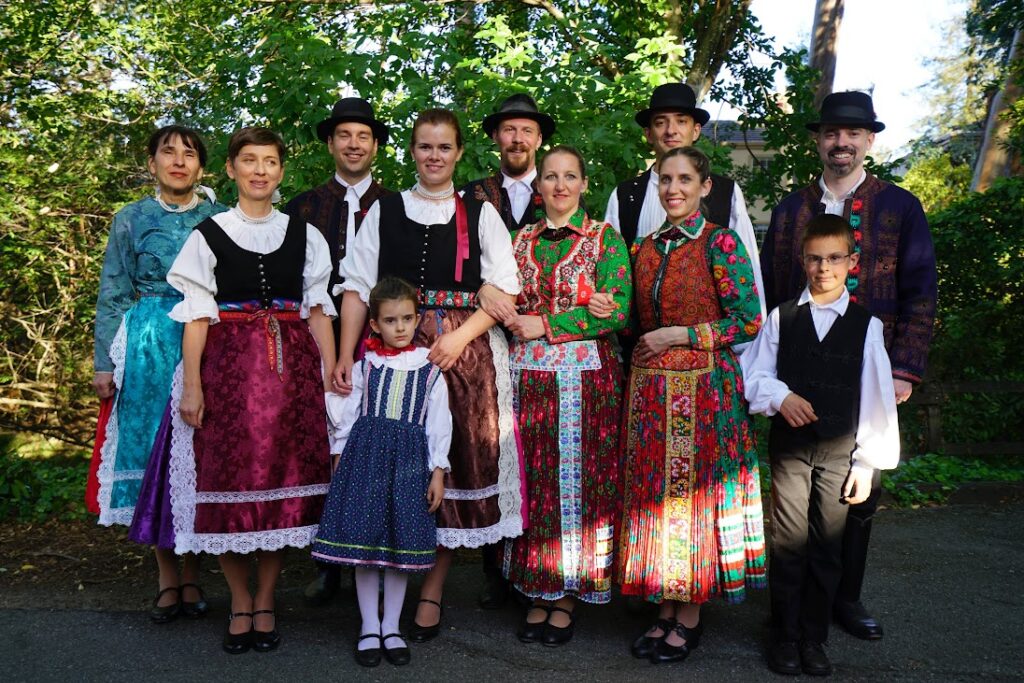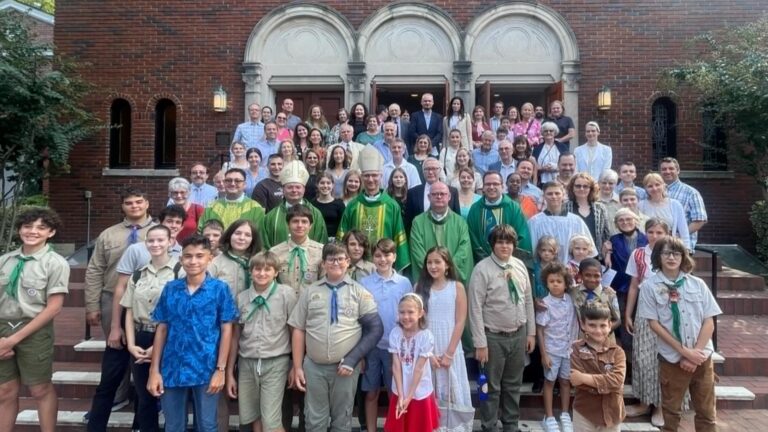On 27 September the latest edition of the online conference series organized jointly by the Diaspora Project Network of the University of Pécs (PTE) and Kerko Media Ltd. featured Hungarian communities and their collaborations in San Francisco and its vicinity. The moderator of the event was Deputy Rector Dr. Ákos Jarjabka. The livestreamed discussion was followed in more than ten countries around the world. It was an impressive presentation of the diverse voluntary activities and exemplary cooperation of Hungarian organizations in North California. The series will continue on 25 October with displaying additional local Hungarian organizations from the San Francisco Bay Area.
Honorary Consul Éva Voisin gave a brief presentation about the Hungarian presence in California. According to the latest U.S. census data, there are some 1.4 million people of Hungarian origin in the U.S., of which she estimates that some 120,000 live in California, the majority of them in the larger Los Angeles area; and about 6,000 in the San Francisco area. She presented the short biographies of several famous Hungarians who were or are living in California. For instance, Ágoston Haraszthy founded California winemaking in 1850 and established the Buena Vista winery; Hungarian Corvin Chain Recipient Dr. Edward Teller, the ’father of the hydrogen bomb’, lived on the Stanford University campus; Nobel Prize winner János Harsányi was a professor at the University of California, Berkeley; Dr. András Grove was the co-founder and CEO of Intel Corporation living in Santa Clara; and Dr. Balázs Bodai, a well-known cancer surgeon lives in Sacramento. In the world of entertainment, there are Oscar winner cinematographer Vilmos Zsigmond; three-time Oscar-winning composer Miklós Rózsa; Kossuth Prize-winning composer Éva Szörényi—who also supported the erection of the Gloria Victis statue—; and Peter Falk, the actor who played detective Columbo. In the field of sports, the names of several Olympic gold medal-winning athletes were also mentioned including water polo player Sándor Tarics, fencer and coach György Jekelfalussy-Piller, water polo player Ervin Zádor, and fencer Dániel Magay. We were informed that Hungary is currently represented in California by Consul General István Gróf in Los Angeles, TéT diplomat Nóra Mészáros, and Honorary Consul Éva Voisin.

Éva Szabó, the director of the Orly Museum of Hungarian Culture, founded by the Orly sisters in 2019, explained the museum’s mission: to raise awareness and appreciation of Hungary’s rich culture and its long and eventful history. As mentioned, the museum’s diverse programs (exhibitions, book presentations, concerts, film screenings, commemorations, lectures, meetings and museum education, etc.) provide interactive and inspiring experiences for visitors of all ages, whether Hungarian, American or of any nationality. Éva informed us also about the number of the museum’s visitors: 500 in 2021, 700 in 2022 and 1,000 in 2023, with more non-Hungarians than Hungarians overall. Two Saturdays a month, the museum and its programs are free of charge. The library and archives that are being compiled include more than 4,000 Hungarian volumes.
As Szilvia Gilbert explained, the mission of the Hungarian Heritage Foundation is to preserve and transmit the values of Hungarian culture and to make those known to the American public as well as to provide financial support to local non-profit organizations. There are two events they are most proud of: since 1958 they have celebrated Hungary’s national holiday, 20 August in Golden Gate Park, the city’s most famous landmark, with 250–300 people. Furthermore, since 2012 they have been organizing the Hungarian Heritage Festival on the second weekend in each May at Twin Pines Park in Belmont, which attracts 2,500–3,000 guests annually. It showcases Hungarian cultural and gastronomic treasures with folk programs and guest artists from Hungary, such as András and István Berecz. This year they presented spring folk customs. During the nine years of the life of this festival so far, 1,500 volunteers have helped them.
Ildikó Rónyai-Harris informed us about the prehistory of the new Hungarian Cultural Center founded in 2024: the Hungarian House was a long-standing dream of the local community, made possible by the recent sale of the building of the local Reformed Church and of the previous Hungarian House as well as by generous donations. The Hungarian Cultural Center is the result of the cooperation of Hungarian people and organizations to preserve, enrich and pass on their Hungarian culture, heritage and traditions. This year, the Reformed Church purchased a property with a separate building for the Center adjacent to the church, which, although owned by the church, functions as a secular institution. It’s a community space that hopefully will ensure the survival of Hungarian culture for the next generation. They plan to organize historical and cultural events as well as commemorations. One of their objectives is to strengthen connections with people interested in the Hungarian diaspora and to launch a cultural exchange program with a Hungarian partner organization.

Attila Egyedi, as the business manager of the Eszterlánc Ensemble, explained that the ensemble was founded in 1977 by a Hungarian folk dancer at Stanford University. They currently have 15–18 adult members and hold three-hour-long rehearsals every Friday evening. Their goal is to display and pass on Hungarian folk dance and music traditions to other nationalities, therefore they perform at local events and festivals. They also aim to build the community with at least one dance hall (táncház) event per year, supported by a live band, the members of which they invite from elsewhere in the U.S. and Canada. They have some local musicians and are able to provide live music for the children’s táncház. They are supported by Kőrösi Csoma Sándor Program (KCSP) scholars. They are proud of their folk costumes, which include unique old pieces brought from Hungary by former members; they occasionally receive costumes as donations and recently had new ones sewn in Hungary, with the assistance of a KCSP scholar. They train in dance camps, cooperate with the scouts who they teach every other weekend, they are regular performers of the annual Heritage Festival, and in cooperation with the Cultural Center they will soon launch a monthly dance course for the general public. As Attila said, the Mazsola Children Folk Dance Ensemble, founded in 2007 and revived in 2022 by KCSP scholar Ilka Dajka, is the cornerstone of the future of the Eszterlánc Ensemble, with more and more children joining. Currently, they hold rehearsals with 15–20 children on Saturday mornings, where they learn folk dance, songs and traditions in a playful way. Last year’s Heritage Festival was their first performance in a long time.
Éva Pápai presented the triple motto of the Hungarian Catholic Mission: faith, culture, and charity, which defines their trifold activities. We learned that in the early 1950s, Hungarian priest Dr. József Jaszovszky began to unite the Catholic Hungarians around the San Francisco Bay Area and held occasional services for them. In 1956 Benedictine monks from Pannonhalma settled in the San Francisco Bay Area; Dr. Egon Jávor and six others founded the Woodside Priory Benedictine Community and School in Portola Valley. The Mission was officially established in the early 1960s. Under the leadership of Father Jaszovszky, the venue of the regular Hungarian mass was moved to Portola Valley. The Mission’s emphasis was to preserve Hungarian cultural identity. Together with the Hungarian Reformed Church, they founded a local scouting troop. Father Jaszovszky retired in 1984 and was succeeded by Benedictine Father Kristóf Hites, who was succeeded in 1994 by Father Maurusz Németh, who now runs the Mission with Father Máté. Today, every Sunday there is a Hungarian Holy Mass held at 11 am which is available online along with the recordings of previous masses. There’s an agape afterwards, which has greatly strengthened the community. One of their main goals is to earmark the proceeds of their charity events to support Hungarians in Transylvania and Transcarpathia, the Institute for the Blind in Budapest, orphanages and Catholic church renovations in the Carpathian Basin. Father Maurus often travels to the beneficiaries to personally hand over the funds raised. National holidays are a special priority for them, celebrated either in the chapel or outside the building in the context of some cultural event. The school also has three community rooms, where cultural events are regularly organized and artists from Hungary are also welcomed. As Éva Pápai explained, first communion and confirmation are new events for them, as the chapel has only recently been authorized for these services (they previously had a contract with another church for use as the service venue). They work very closely with the scouts: the Santa Claus celebration and nativity play are joint events, hosted by the Mission. Their own event is a yearly pig dinner. It’s promising news that a younger group has recently taken over organizing this event from the founding members.

Pastor Gábor Magyari-Köpe introduced the Hungarian Reformed Church of San Francisco and Vicinity, whose congregation is the oldest in the area, with a history dating back to 1927. The church was officially established at the Pentecost of 1951. Its first building was purchased by Pastor Lajos Illés in 1951, funded by the 35 members and donors. The church was led by General Archdeacon Antal Borbás for the longest time, from 1961 to 1982, with a firm and skilful leadership, increasing the membership from 35 to over 100. In 1984 the building was sold, and the congregation moved to Redwood City, where in 1989 they managed to purchase a second church, with a dining room enabling cultural events. The 13 years of pastor Jenő Katona’s service resulted in a busy community life, which the current pastor has served since 2003. In 2022, the church was sold again, and they moved to a rented building on the east side of the Bay Area, which was purchased in May 2024. This is a huge step, perhaps the biggest in the history of the church, the pastor said. They have worships every Sunday, once a month in English and bi-weekly Bible studies. In addition to church and national celebrations, secular events such as a pig roast picnic, bake sale, autumn bazaar, concerts, and literary performances are also organized regularly.
At the end of the conference, North American Regional President of the Diaspora Council Ildikó Mónika Pataki presented the organization founded in 2011 as a common advocacy forum for Hungarian diaspora communities around the world. After praising the Kőrösi Csoma Sándor scholarship program, she called our attention to the Hungarian American Schools Meeting (AMIT) on 5–6 October at the Consulate General in New York.
Finally, at the organizers’ request, Ildikó Antal-Ferencz (Denville, New Jersey) introduced herself: she is a freelance journalist living in the U.S. for more than two years and by now she has written more than 200 articles for different Hungarian newspapers about the Hungarian diaspora in North America. Her interviews have been published in two volumes, Being Hungarian in America I and II, as the courtesy of Bocskai Radio in Cleveland. She is currently working on the third volume of this series and also on an English-language compilation. Julio Schmidt (Bogota, Colombia) also introduced himself: he is the author of the vlog anéKdotiKas and one of the founders of the Talking-Speaking Circle that holds a thematic forum on the first Thursday of every month.
Related articles:








